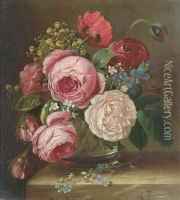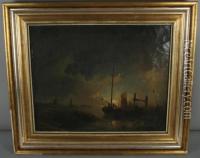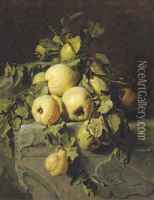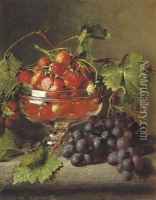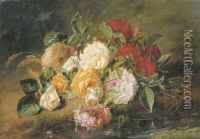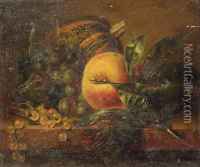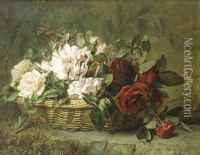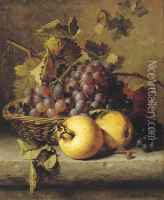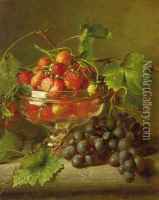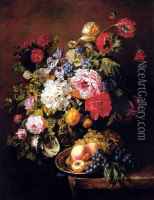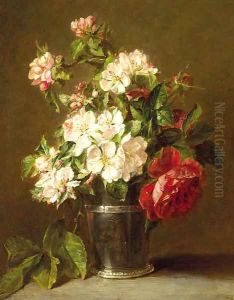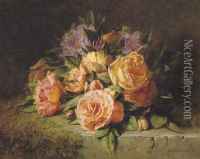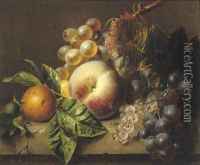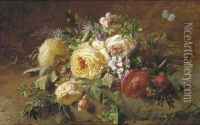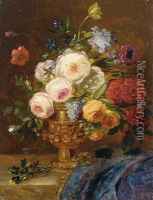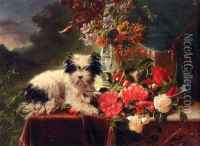Adriana-Johanna Haanen Paintings
Adriana Johanna Haanen was a Dutch artist known for her still-life paintings, particularly of flowers. She was born on June 14, 1814, in Oosterhout, Netherlands, into an artistic family. Her father, Casparis Haanen, was a landscape painter, and her siblings, Remigius, Elisabeth, and George Gilles, were also painters. This familial environment influenced her artistic development from a young age.
Haanen began her art education under the tutelage of her father and later studied in Utrecht. She developed a meticulous style that emphasized the beauty and detail of her floral subjects. Her works are characterized by a fine attention to detail, vibrant colors, and the ability to capture the texture and delicacy of the flowers she painted.
During the 19th century, still-life painting was a popular genre, and Haanen became one of the few successful female artists in this field. Her works were well-received and exhibited in various art shows, including the prestigious Amsterdam Exhibition of Living Masters, where her paintings were shown regularly.
Adriana Johanna Haanen never married, and she lived a life devoted to her art. She was a member of the Arti et Amicitiae (Art and Friendship) society in Amsterdam, which was an important institution for Dutch artists of the time. Her work gained recognition and she was awarded a gold medal at the Exhibition of Living Masters in 1845.
Haanen's paintings are now part of various museum collections, including the Rijksmuseum in Amsterdam and the Centraal Museum in Utrecht. Her legacy is that of a skilled still-life painter who managed to carve out a successful career at a time when the art world was largely dominated by men.
She passed away on August 8, 1895, in Oosterhout. Despite the challenges of her era, Adriana Johanna Haanen left behind a body of work that continues to be appreciated for its beauty and technical excellence.
